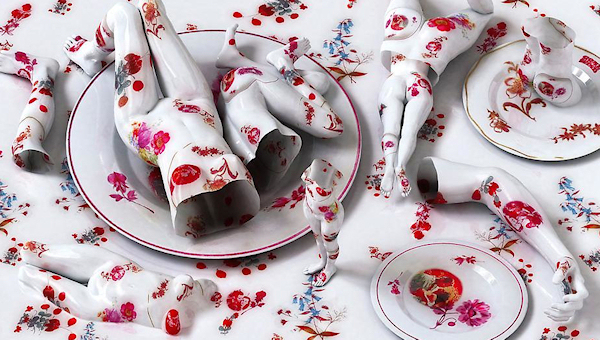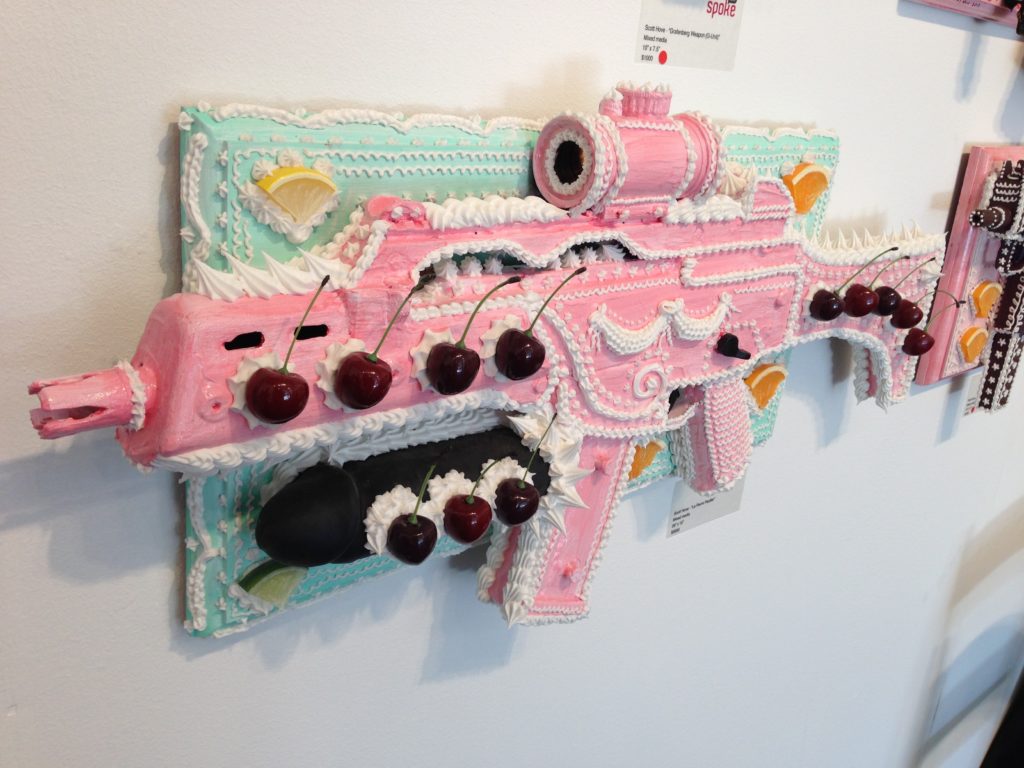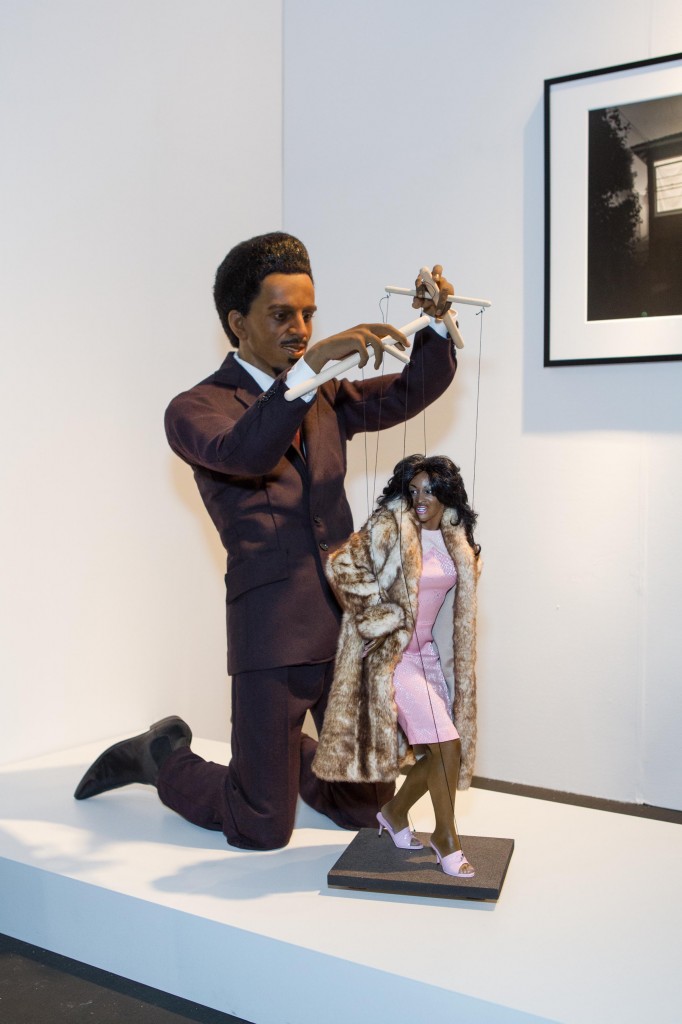Society cannot do without the Artist or the Philanthropist. Both enrich, entice, revolt, and agitate the status quo. Both are vehicles of impact through the creation of conversations, often without adequate language to convey the urgent need for art. But then again, why is there an urgent need for art when poverty is rampant? As disease, inequality, sexism, war and a host of other problems sweep through our cities, why should we care about art? I asked myself the same question. Why should I care about art? Should I care about other things more? Why does my city need this? I know the emotional reasons for art, but a logical reason had me stumped.
It wasn’t until I walked through the expansive array of visual art, curated by ArtMarket in Fort Mason, San Francisco that I saw how disturbingly precise art’s commentary on culture and society can be. I found myself compelled towards an exhibit in direct response to Sandy Hook, guns that looked like cake. Safe. Ruthless. Destructive.
Bay Area artist Scott Hove used mixed media to sculpt a conversation about gun violence. The symbolic renewal of food, something sweet and tasty, fused with a killing machine began to tax my intellectual resources. I was deep into a web of ontological and epistemological inquiry, standing in front of this unsettling, interesting piece of work. Why do we have guns, really? How can anyone think this is ok? How is my safety and the safety of my future children at risk when just about anyone can own a gun?
It wasn’t long before I was confronted with something more to ponder – contemporary artist Kim Joon’s dark inspiration and metaphysical anxiety. The three-dimensional digital artwork engaged me with a tale of disturbing majesty. Joon created images to be the manifestation of human desire and pain. Perfect porcelain body parts of women and men overlaid with luxurious designer prints. These incomplete figures laid perfectly on plates as if to suggest a transformative process of digital tragedy to a more disturbing fundamental tragedy. Sure, I could easily pull out a million conversations around society and sexism. Right there. In those pictures hate, love, commodification, separation, compromised morality, all intensified the moment I was in.
After some deliberation, I decided the mystery of art could only be experienced in the emotional realm, sort of like music. We need the beautiful, the inexhaustible — the thing that gives us an ability to connect when words can no longer convey who we are, what we do and why we do what we do. In a certain respect, the artist is the “philanthropist,” giving openly for the common good. The artist brings an unknown force of conviction, speaks with the rebel’s voice and doesn’t back down from the shadows we may fear. We need art for this reason. To take us deeper, have conversations beyond the verbiage. We need pure experience to understand that which may elude us.
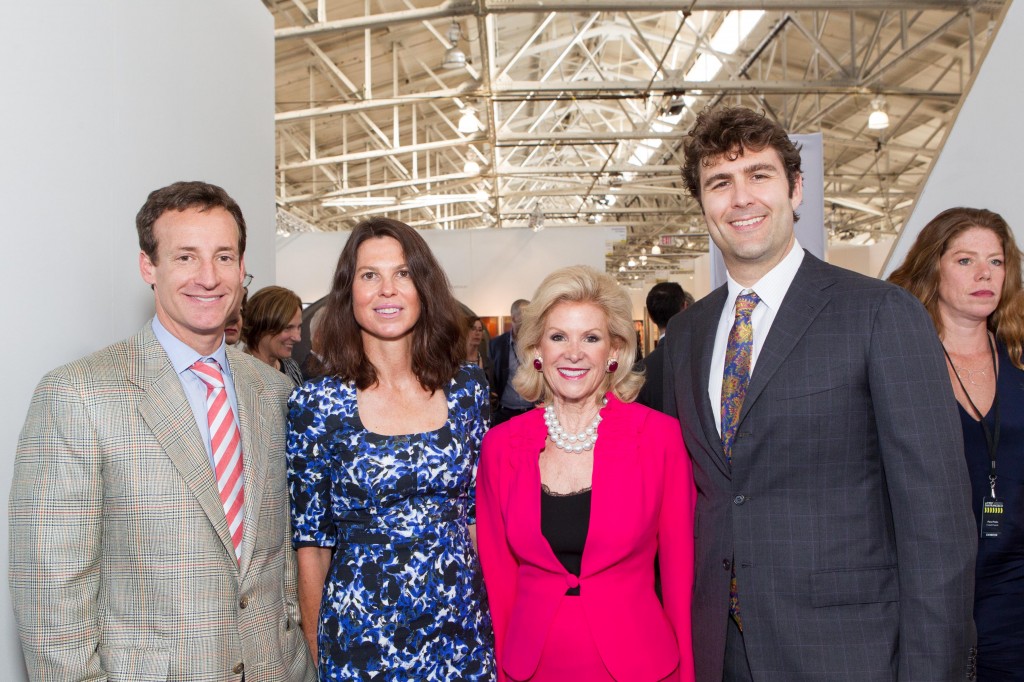
artMRKT San Francisco; Photographs Courtesy of Drew Altizer Photography
Art Philanthropists Todd Traina,Dorka Keehn,Dede Wilsey, Zachary Bogue
In the same space, without the continued participation of the financial support from art philanthropists, the artist endures an excruciating attempt to find funds. Many creators know the torture of building without funding. It’s nearly an impossible task.
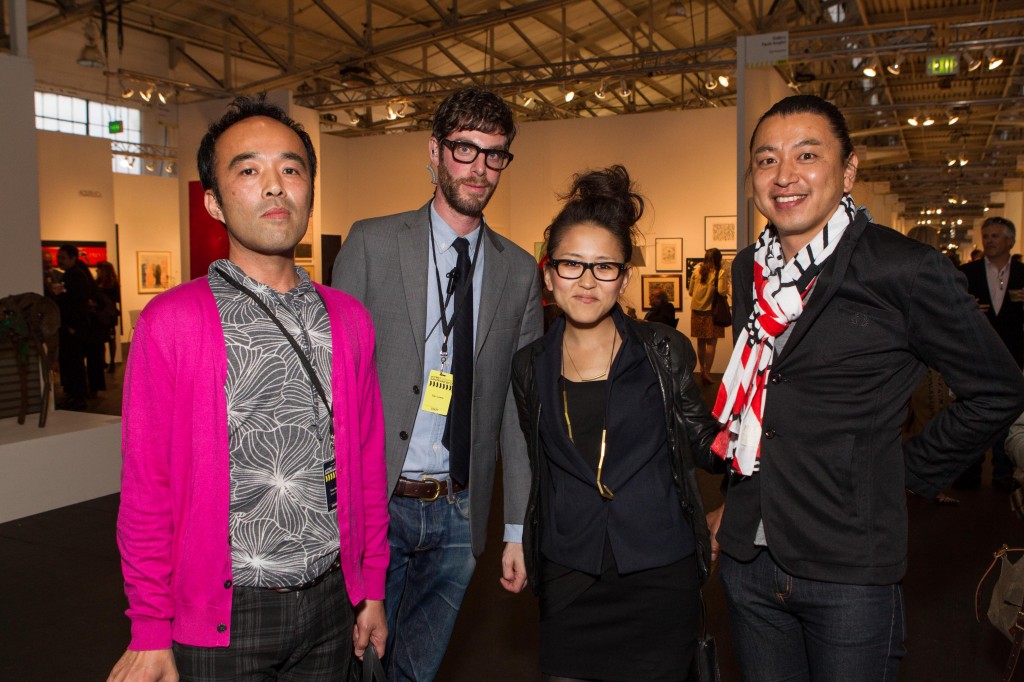
artMRKTSF attendees Taro Hattori,Dan Lewis,Aoi Yamaguchi,Akira Okawa
artMRKT San Francisco; Photographs Courtesy of Drew Altizer Photography
The rhythm and order of community need those who give and those who embrace. The art philanthropist knows the artist is a catalyst to change. Providing a financial resource not only allows a continuation of conversations that might be missing, it also creates cultural prosperity for all communities.
There may never be exact, direct measurements of the impact of something so ethereal, but if there were a happiness index I know music and art would be at the top. The deep emotional, contemplative gift that is given by art is one that even the poorest and most desolate of societies create and embrace. And if one were to reflect upon it, the conclusion would be – it’s cyclical. The resources simply circle, some in form of money, others in form of ideas. All of it is imperative for any type of real impact in a society. Change occurs when the emotional and the intellectual are given equal weight. There is absolutely no question in my mind why the artist and the art philanthropist are actually one and the same. It is like a metamorphic process from money to idea to art to impact. Drawing a line of connection is simple once you can see yourself as a part of the process.

